Olympic flame is ‘fake’: Floating cauldron fire that wowed the world at Paris 2024 opening ceremony is 100 per cent electric, using LED lights and water mist – and is even safe to touch
The Olympic flame that stunned the world at the opening ceremony of Paris 2024 in a floating cauldron is not real, but it is 100 percent electric, organisers have revealed.
The ‘fake’ flame is created using 40 LED lights and water mist, making it safe for anyone to touch.
Paris wants to host the ‘greenest Olympic Games ever’ using the traditional witches’ flame, which normally runs on fossil fuels.
Tony Estanguet, head of the Paris 2024 organising committee, said: ‘We wanted the boiler to use a new technology so that it wouldn’t produce too many emissions.
‘We were ambitious and wanted to create something spectacular, but at the same time environmentally conscious.’
The Olympic flame is lit by Marie-Jose Perec and Teddy Riner during the opening ceremony of the Paris 2024 Olympic Games
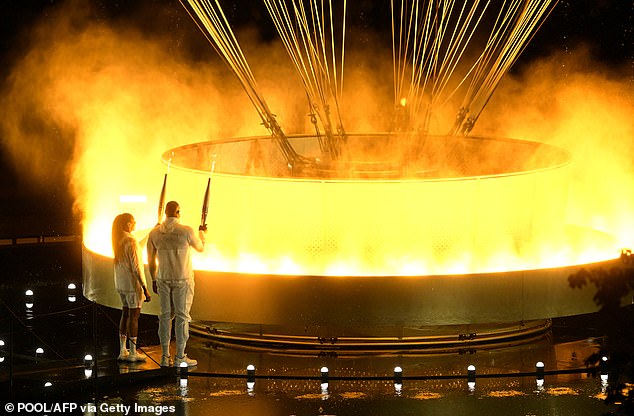
The cauldron, containing the burning Olympic flame, rises while attached to a balloon

The ‘fake’ flame is created using 40 LED lights and water mist, meaning it is safe for anyone to touch
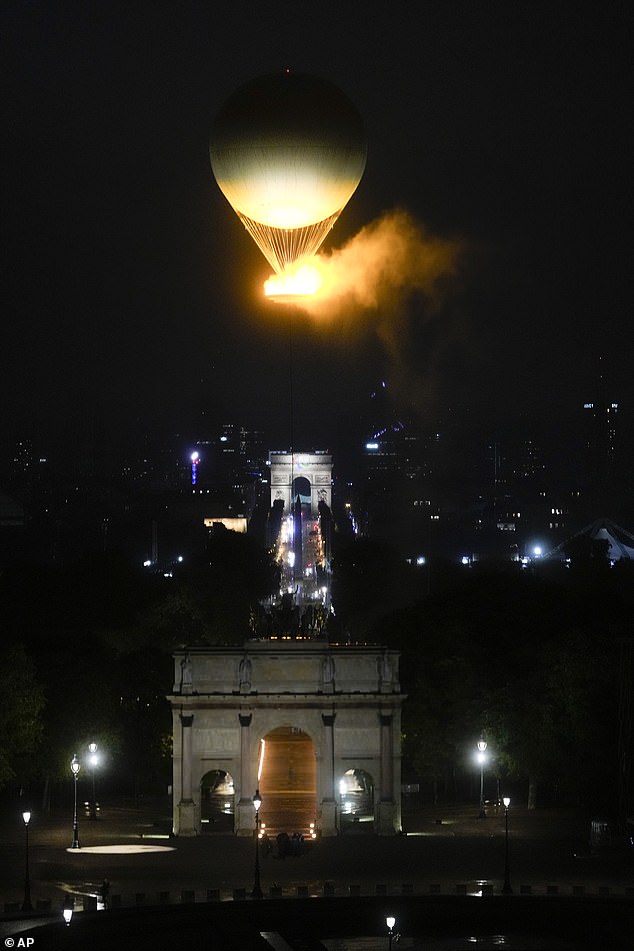
The balloon rises into the night sky over Paris on Friday evening
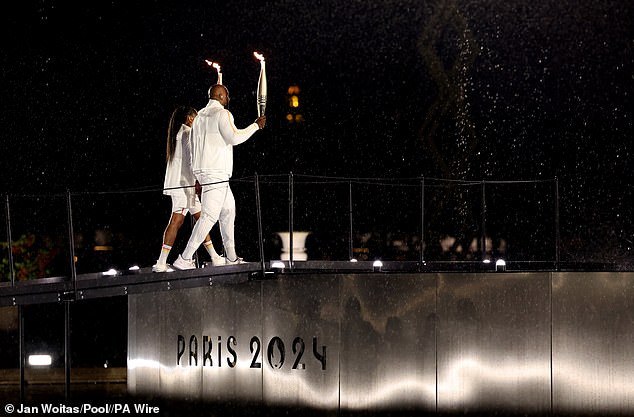
Marie-Jose Perec and Teddy Riner before lighting the Olympic flame during the opening ceremony
French Olympic gold medalists Marie-José Pérec and Teddy Riner surprised the crowd at Friday night’s opening ceremony by taking on the traditional role of carrying the torch flame to the Olympic crucible.
A ring of fire was then used to power a hot air balloon, which then flew into the night sky over Paris, creating a spectacular display.
This move was a nod to the Montgolfier brothers, the French pioneers of the hot air balloon.
Their first designs were launched in 1783 at the same location as the Olympic flame in Paris 2024.
The ‘fake flame’ will burn throughout the Olympic Games, while the balloon will remain on the ground in the Tuileries during the day.
At night, the balloon rises again and floats about 30 metres above the French capital.
French designer Mathieu Lehanneur developed a new type of hot air balloon with a ring of fire.
He said: ‘This absolutely unique Cauldron represents all the soul I wanted to give to the Olympic and Paralympic objects.
‘Light, magical and connecting. It will be a beacon at night and a sun within reach during the day.’
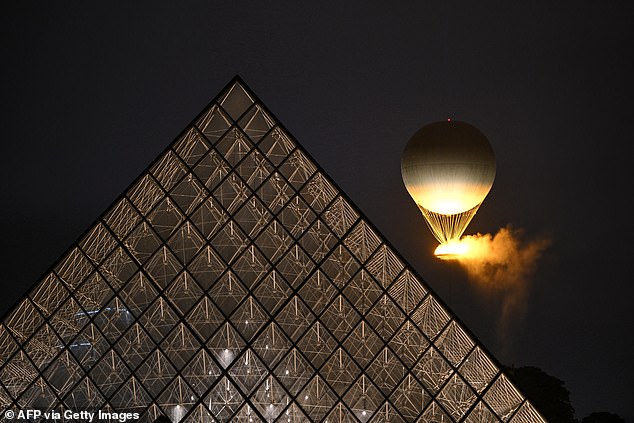
The cauldron, containing the burning Olympic flame, rises while attached to a balloon
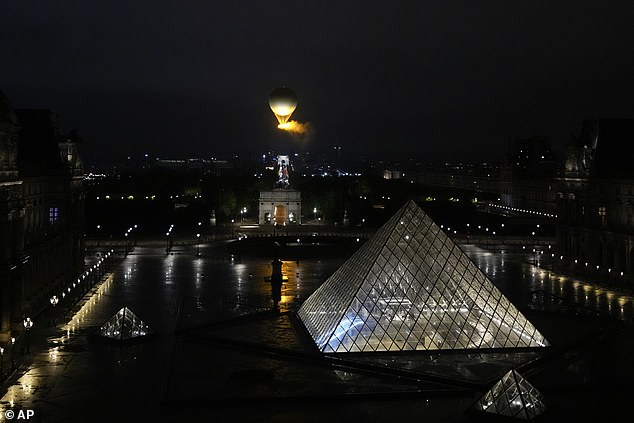
The move was a nod to the Montgolfier brothers, the French pioneers of the hot air balloon
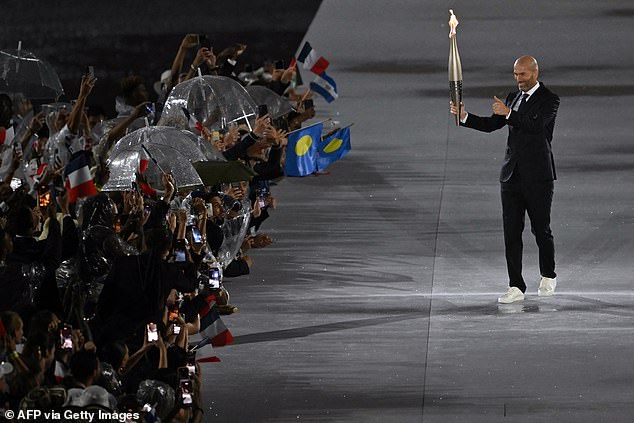
Former French footballer Zinedine Zidane carries the Olympic flame past athletes
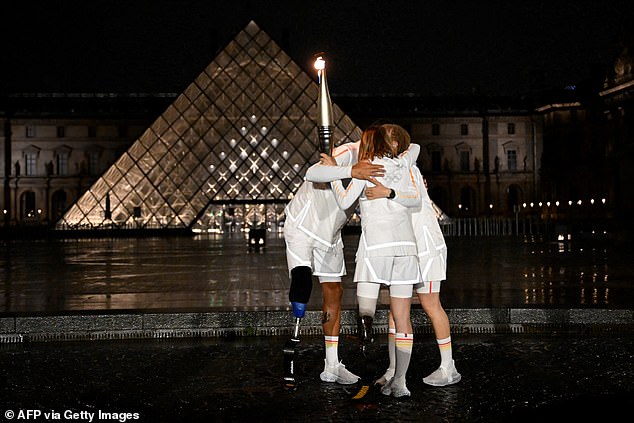
Paris aims to host the ‘greenest Olympic Games ever’ using the traditional cauldron flame that normally relies on fossil fuels
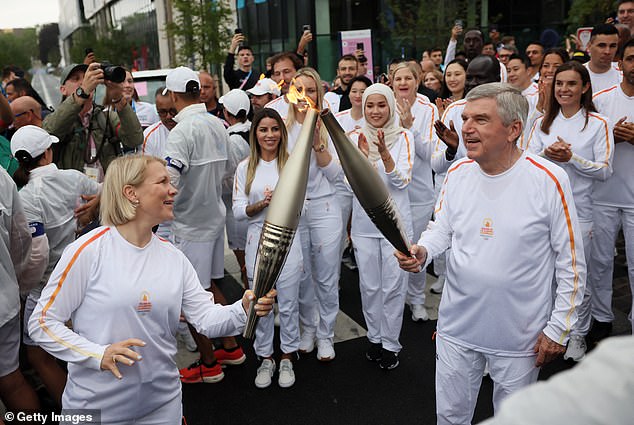
Emma Terho, President of the IOC Athletes’ Commission, and Thomas Bach, President of the International Olympic Committee (IOC), carry the Olympic flame on July 26
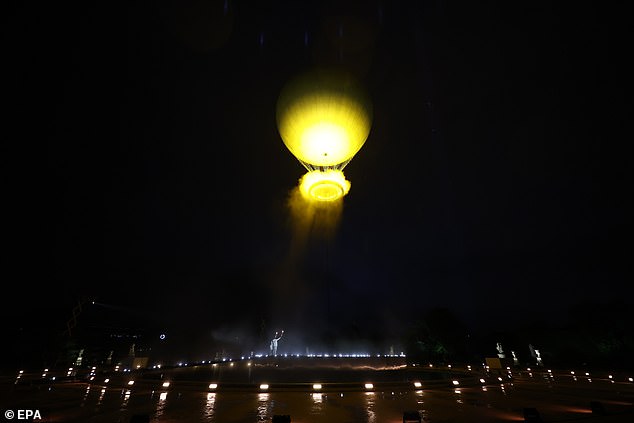
The cauldron containing the Olympic flame floats above La Concorde during the opening ceremony
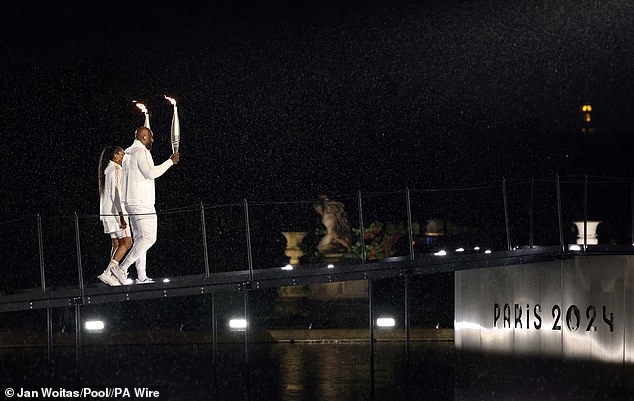
Marie-Jose Perec and Teddy Riner before lighting the Olympic flame at the opening ceremony of Paris 2024
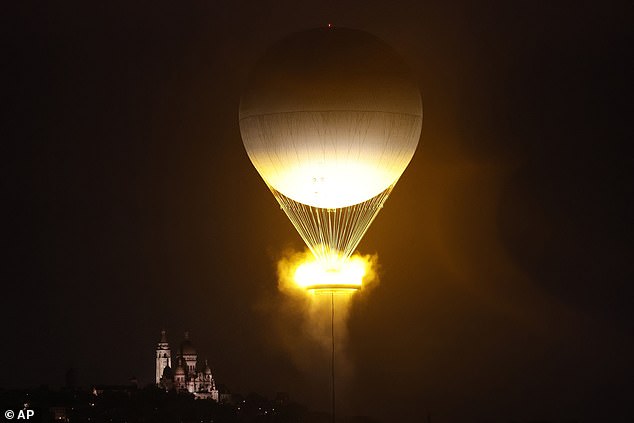
The cauldron, containing the burning Olympic flame, rises while attached to a balloon
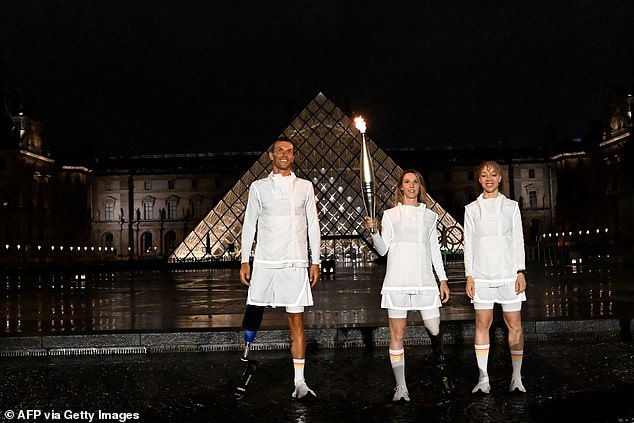
French Paralympic athlete Marie-Amelie Le Fur holds the Olympic flame
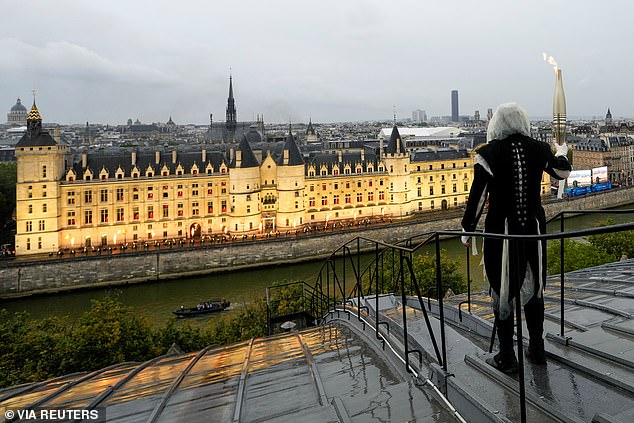
A torchbearer carries the Olympic flame over a building along the Seine during the opening ceremony
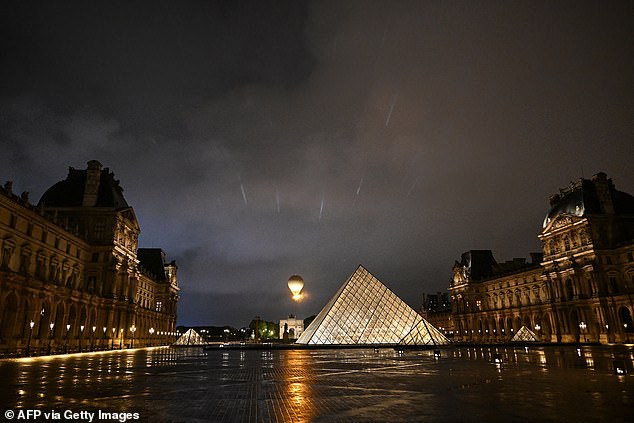
The cauldron, containing the burning Olympic flame, rises while attached to a balloon
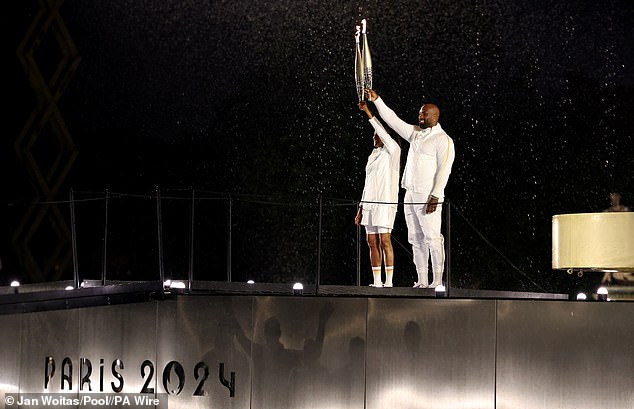
Marie-Jose Perec and Teddy Riner before lighting the Olympic flame at the opening ceremony of Paris 2024
‘The fire that burns within it will be made of light and water, like a cool oasis in the middle of summer.’
The use of a ‘fake flame’ in the cauldron comes after the torch for the 2024 Paris Olympics was lit during a traditional ceremony in ancient Olympia.
Months before each game, the flame is lit at the site of the ancient Olympic Games in Greece using sunlight and a parabolic mirror.
This year, however, Greek actress Mary Mina, who played the role of the high priestess, lit the torch using a spare flame due to the cloudy sky, at the start of a relay in Greece and France.
The flame is then carried in a relay using torches to the opening ceremony site, where a cauldron is lit.
The cauldron will then burn throughout the Games, until it is extinguished during the closing ceremony.
Paris 2024 organisers have defended the use of a ‘fake flame’, saying its use is mainly symbolic.
A spokesperson for the Games said The Telegraph: ‘For the Olympic movement, only the symbol of a flame that will not go out until the end of the Games is important.
‘This flame is the real Olympic Flame, after the lighting ceremony in Olympia and the Olympic torch relay throughout France.
‘Given the specific characteristics of our cauldron and the technologies involved, we will place a burning lantern in the immediate vicinity of the Cauldron for the public to admire.’
It is not the first time that the use of a real flame has been questioned.
During the 1976 Olympic Games, the flame was converted into a radio signal and broadcast to Ottawa.
